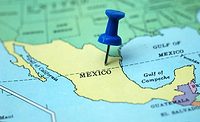U.S., Mexico Hold Second Annual Food Safety Partnership Meeting

Credit: agustinbg via Pixabay
On August 25, 2022, the U.S. Food and Drug Administration (FDA) and its regulatory counterparts in Mexico—the Federal Commission for the Protection from Sanitary Risks (COFEPRIS) and the National Service of Agro-Alimentary Health, Safety and Quality (SENASICA)—held the second annual Food Safety Partnership (FSP) Meeting in Mexico City, Mexico as part of ongoing efforts to help ensure the safety of food imported from Mexico and to advance protections for consumers in both countries. In addition to holding the annual FSP Meeting, FDA, SENASICA, and COFEPRIS visited a farm to implement food safety practices, including traceability, and to observe unique growing and harvesting practices. The agencies also met with industry to learn more about its food safety efforts and to discuss collaborations.
According to FDA, one third of all agency-regulated human food imported into the U.S. is from Mexico, including 60 percent of the U.S.’ fresh produce imports. Frank Yiannas, FDA’s Deputy Commissioner for Food Policy and Response, stated that the U.S. and Mexico’s shared goal is to proactively use modern technologies, tools, and approaches to help protect the global food supply.
During this year’s meeting, the agencies reported tangible progress in each workgroup and discussed plans for the coming year to further food safety in both countries. Reported progress and outcomes included:
- Exchanging key information and plans that guided efforts to address a 2021 Salmonella outbreak, which was linked to bulb onions from the state of Chihuahua, Mexico. The three agencies shared information on their respective onion plans to guide response and prevention efforts such as: SENASICA’s mobile laboratory for assessing field samples from inspections, FDA’s Foreign Supplier Verification inspections for onion importers, and hosting technical meetings with Mexican onion growers and packers to learn more about their production practices.
- Collaboration with the papaya industry on the verification of the papaya checklist, a tool to further encourage the adoption of food safety best practices for papaya.
- Discussing progress on the implementation of FDA’s Cyclospora cayetanensis methodology distance training plan based on the Bacteriological Analytical Manual (BAM) Chapter 19b method for detecting Cyclospora in produce samples for SENASICA and COFEPRIS. Competency in the methodology will expand international capacity for detecting Cyclospora.
- Establishing a new commitment for Whole Genome Sequencing (WGS) where SENASICA and FDA have committed to a data sharing agreement to upload 100 sequences (food and environmental) to the GenomeTrakr network. This contribution to the GenomeTrakr network allows both countries to identify and respond to outbreaks faster and with more precision.
- Establishing revised Binational Outbreak Notification Protocol to improve timely and effective communication by sharing WGS data, including a reference to the laboratory methodology for detection, and using the FDA CORE Investigation Table to share publicly available epidemiologic information. As a next step, the FDA, SENASICA, and COFEPRIS are working on a new model for conducting inspections involving participation by all three regulatory agencies where a food safety issue is suspected.
Additionally, during this year’s meeting, FDA, SENASICA, and COFEPRIS reviewed Produce Safety Rule (PSR) trainings they had facilitated, including those with cilantro growers in Puebla, avocado growers in Jalisco, and bulb onion growers in Chihuahua. The three agencies also worked with EMEX, a mango association, to conduct three PSR trainings for mango producers in Sinaloa, Nayarit, and Jalisco. FDA also provided outreach to SENASICA and COFEPRIS personnel about standards for the growing, harvesting, packing, and holding of produce for human consumption relating to agricultural water under FDA’s proposed Agricultural Water Rule.
FDA, SENASICA, and COFEPRIS will continue to work closely together to support training for food producers, preventing and responding to foodborne illness outbreaks, and developing and implementing plans to enhance food safety for mutual public health.
Looking for a reprint of this article?
From high-res PDFs to custom plaques, order your copy today!





